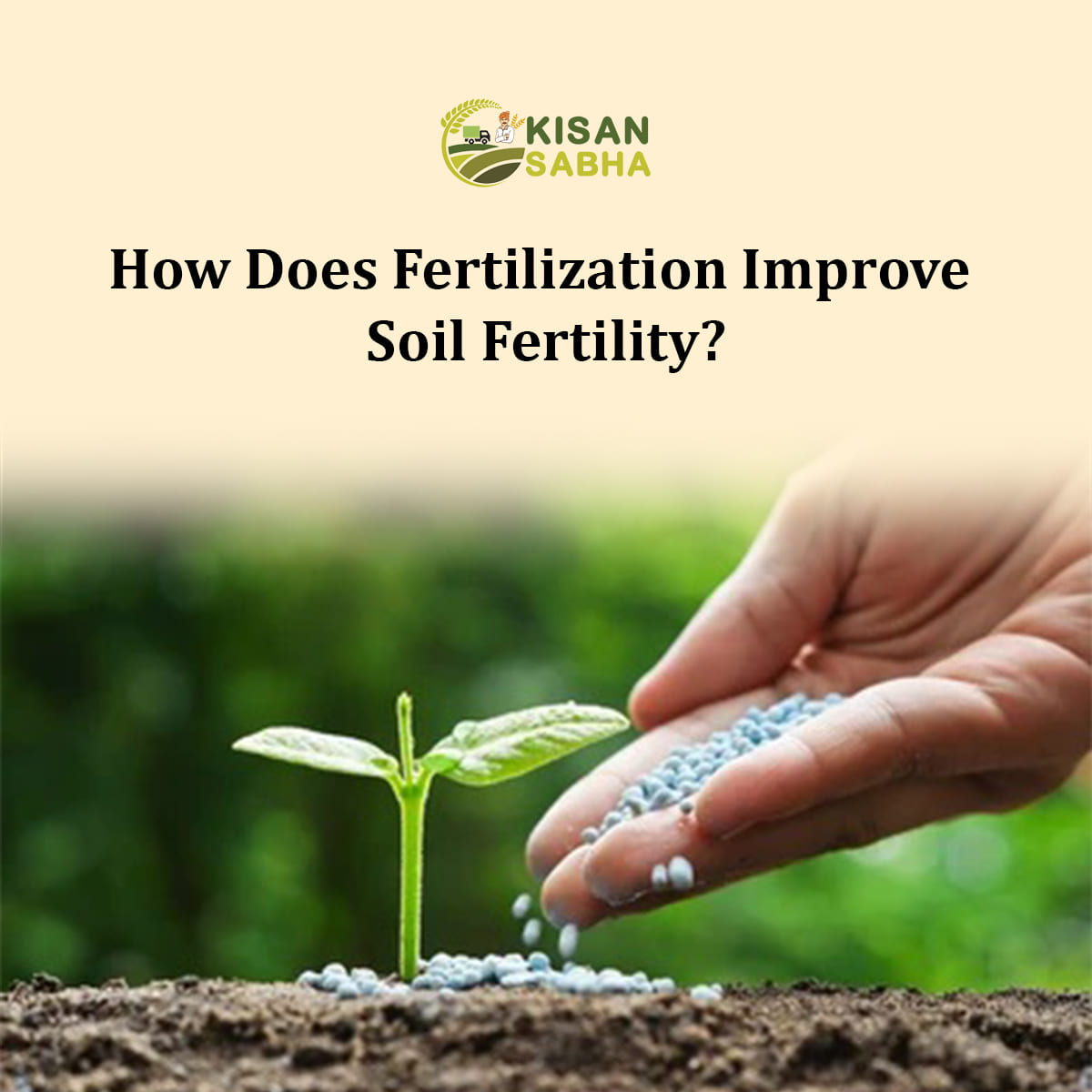For healthy growth of plants and production in agriculture, soil fertility is a very important factor. To properly manage land, it is necessary to understand the sources of fertility in soils and how fertilization would subsequently improve fertility.
What Makes Soil Fertility?
Two types of factors influence soil fertility: direct and indirect. The amount of organic matter, wetness, and field aeration are all direct influences. Soil biota activity, tillage methods, and many others are examples of indirect effects. Let’s have a look at the most essential soil fertility parameters.

Humus Content
It is found that the capacity of the land to produce plants is directly related to the quantity of humus in it. In terms of composition, humus which is a dark coloured soil constituent is rich in nitrogen and phosphorus, the two macronutrients that are essential to the growth of most plants. Humus enhances soil fertility providing microclimatic conditions for crops about temperature, moisture, and air requirement. Humus plays a crucial role in affecting the soils it is present in and there is a close relation between it and the type of soil.
Soil Texture
The texture of the ground is influenced by particle sizes and their ratios. Clays and other small-particle soils are characterized by a thick structure that performs as a nutrient storage reservoir. But a structure like that can make it hard for the plant root systems to get water-soluble nutrients.
Mineral Composition
Mineral content may be used for the assessment of the nutrient storage capacity of the ground because the texture characteristics define microbiota distribution and the stabilization of organic matter in the ground. Chemosynthesis fertilizers as well as organic ones can alter the mineral content of the soil and enhance its fertility.
Soil pH
Why do mineral elements change soil fertility based on pH? This factor is the pH level – the degree of soil alkalization or acidification: the higher the pH, the less available nutrients are for the plant. Most plants prefer a pH of between 6.5 and 7.5. These restrictions are known as the acidity of rich soil.
Most micronutrients are less readily available in alkaline soils with a pH higher than 7.5-8, and acidity increases the buildup of heavy metals in the fields and decreases phosphorus absorbability.
Moisture Level
Fertility is highly reliant on the amount of moisture in the soil since plants absorb nutrients directly from water rather than the solid phase of the soil. Growers should therefore choose sites that offer plants enough water.
Aeration
Field fertility must ensure aeration. For plant roots to flourish, they need oxygen. Additionally, oxygen encourages the important activity of beneficial microorganisms in the soil, such as aerobic bacteria that fix nitrogen and denitrify nitrate.

Soil Temperature
The solubility of nutrients, the activity of helpful microbes, and plant uptake are all influenced by the ground’s temperature. For most plants, temperatures between 18 and 24°C (65 and 75°F) are suitable. Low soil temperatures cause all processes to slow down, while high temperatures cause pathogens and pests to multiply quickly and plants to dry out.
Soil Flora
Its biota, which includes bacteria, fungi, viruses, and lichens, is incredibly diversified. Plant pathogens and plant growth boosters are two different types of microbes. Consequently, how do bacteria improve soil fertility? Microbes conserve soil fertility primarily by helping plants absorb minerals and also participate in the decay and degradation of organic matter.
Also Read:- 6 Easy Ways to Garden Without Soil Using Water
How Does Fertilization Improve Further Soil Fertility?
That is, the generous yield of crops is based on plenty of micro and macronutrients that these plants require for their growth. Consequently, one of the basic and permanent tasks of farmers is to fertilize their lands.
Fertilizers are Available in Two Categories:
Organic fertilizers are safe and advantageous to the environment because they come from natural (organic) raw materials like cattle manure and compost. In the long run, organic fertilizers restore soil fertility more effectively than inorganic ones. However, they have a drawback: they do not dissolve in water or minerals. Instead, they release nutrients gradually, and microbes play a crucial role in converting these nutrients into a form that plants can utilize.
Synthetic (chemical) fertilizers are a product of the chemical industry. They are water-soluble and assimilate readily, thereby giving quick and radical results. Whereas, the use of these fertilizers in large amounts is dangerous for crops, and field health. Also, the environment has infiltrated water resources and polluted them.
Green manure seeding covers the land which protects it from eroding and helps to conserve water. However, green manure offers much more benefits than this one alone. These contain a lot of nitrogen, phosphate, potassium carbohydrate, and protein. Green fertilizers include buckwheat, radish, mustard, barley, wheat, ry,e and legumes.
Earthworms
The fact that there are certain nutrients in the earth does not mean that the physical environment is suitable for plant growth. Fertility is also an issue of the quantity of earthworms. This is because the compaction of the ground reduces the ability to provide essential chemical factors to the root systems of crops. In their contribution to enhancing the fertility capacities of the soils, what task do earthworms perform? Casting is useful in this aspect because it plows the soil by opening spaces for soil aeration, digesting remains of decomposing food, increasing oxygen levels, and generating humus.
Conclusion
Farmers must carefully consider not just the type and quantity of fertilizer, but also the timing. Different fertilizers serve different objectives and must be used at various phases of fieldwork. Organic fertilizers perform best in the autumn because they have more time to decompose and release nutrients.



